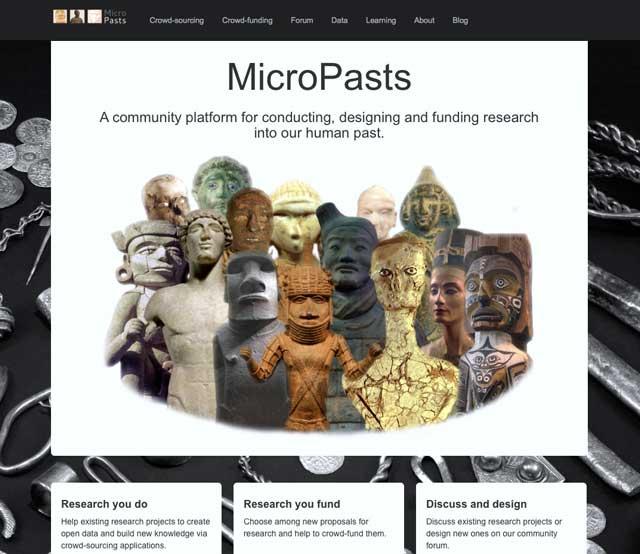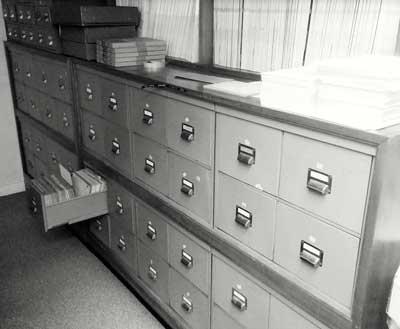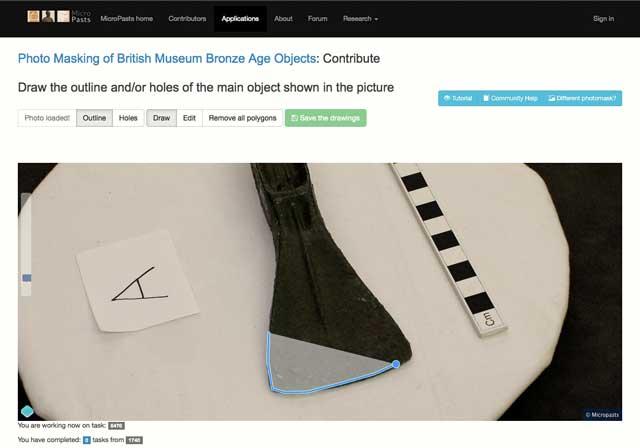This paper offers a brief introduction to MicroPasts, a web-enabled crowd-sourcing and crowd-funding project whose overall goal is to promote the collection and use of high quality research data via institutional and community collaborations, both on- and off-line. In addition to introducing this initiative, the discussion below is a reflection of its lead author’s core contribution to the project and will dwell in more detail on one particular aspect of MicroPasts: its relevance to research and practice in public archaeology, cultural policy and heritage studies.
In the last few years, the potential of digital technologies for facilitating new, more collaborative and creative forms of public engagement with the human past has been an increasingly investigated subject (e.g. Bonacchi 2012; Richardson 2013). In parallel, a growing body of literature has addressed issues concerning open access and open data in archaeology (e.g. Kansa et al. 2012; Lake 2012), sometimes also reflecting upon the wider implications of adopting these relatively novel practices for society at large (e.g. Beale 2012; Bevan 2012). In addition, a number of postgraduate courses, workshops, conferences and articles have considered the roles of archaeological and heritage assets in generating economic development and well-being (e.g. Gould and Burtenshaw forthcoming; Burtenshaw and Bonacchi forthcoming).1 These threads, often interwoven, have partly been a response to the funding opportunities available and, ultimately, also reflect efforts made at national policy level to support the sustainability of heritage organisations and a more proactive social role for research institutions in a time of economic crisis. The UK Arts and Humanities Research Council (AHRC), for example, has recently opened calls for pilot projects and reviews intending to explore fresh ways of understanding the value of arts and culture, or to collaborate with galleries, libraries, archives and museums to develop and critically evaluate public engagement agendas (e.g. the AHRC’s ‘Culture Value’ call and‘ Cultural Engagement Fund’). At the same time, bodies such as the Heritage Lottery Fund and the Arts Council have launched grant schemes aimed at enabling heritage, arts and cultural institutions to devise strategies for diversifying their financing schemes and remaining resilient in a climate of reduced public funding.2
In this broader context, crowd-sourcing, as a way of collecting information, services or funds in small amounts from large groups of people over the internet, has received growing attention from cultural heritage professionals (Dunn and Hedges 2012). This method emerged less than a decade ago in the commercial sector, where companies had been looking for ways of out-sourcing labour to potentially interested workers around the globe (Howe 2006). Today, it is also explored for not-for-profit purposes, as a means of conducting research, curating museum collections and managing heritage resources in collaboration with the public. In archaeology more specifically, crowd-sourcing endeavours have spanned a wide array of activities, including the transcription of papyri, the inspection of imagery for archaeological features, pooling wartime heritage, the interrogation of built architecture and the public recording of metal artefacts, to name just a few. Other projects have employed a slightly different kind of crowd-sourcing, in the form of ‘crowd-funding’, by calling for individually small (but, potentially, collectively large) donations to support the study, conservation and communication of archaeological heritage.
Although increasingly popular, however, crowd-sourcing initiatives in archaeology have been primarily of a “contributory” nature (Simon 2010), inviting volunteers to offer their time, skills and experience to help with projects that had been designed entirely by research institutions. Furthermore, very little evaluative work has been conducted until now to investigate the motivations leading different people to engage with archaeological crowd-sourcing, the ways in which volunteers participate, the value of these exercises for contributors and the organisations involved, and their long-term sustainability, scalability and margins of applicability beyond anglophone countries.
MicroPasts3 aims to address the two key concerns outlined above, by developing and evaluating a novel model that utilises web technologies and crowd-sourcing to support high quality data collection and public engagement with archaeology, history and heritage. The project is conducted as a collaboration between the UCL Institute of Archaeology and the British Museum, with funding from the AHRC call for ‘Digital Transformations in Community Research Co-Production in the Arts and Humanities’. This scheme was designed to facilitate research which proposes to draw on original digital methods for creating resources of enduring value to both academics and relevant communities. Interest in such a topic, and the opportunity of tackling it, came also as a result of prior collaborative work undertaken by some of the team members under the auspices of the UCL Centre for Audio-Visual Study and Practice in Archaeology (CASPAR).4 The Centre, established at the Institute of Archaeology in 2010, is committed to examining all facets of the interaction between archaeology and visual communication online and offline, including new digital media, broadcasting, museum and site interpretation.
As part of the MicroPasts project, a website5 was created where communities that are already established offline (e.g. archaeological and historical societies, groups of metal detectorists, etc.) as well as more ubiquitous online ‘crowds’ can participate in one or more of three activities (Fig. 1). These activities consist of co-producing archaeological and historical open data via crowd-sourcing; designing new research agendas using co-produced data and a community forum; and crowd-funding some of these new collaborations that have been dreamt up collectively. The MicroPasts forum and crowd-sourcing platform were launched publicly on the 16th of April 2014, after six months dedicated to developing the core web components through shared coding practices and open source6. The forum7 has been built using the Discourse discussion software, while the crowd-sourcing site8 relies on the PyBossa framework for CrowdCrafting, adapted thanks to a partnership with the Open Knowledge Foundation and the Citizen Cyberscience Centre. Finally, the crowd-funding platform is constructed from software developed by the Neighbor.ly and Catarse initiatives and will (at least initially) use PayPal to process payments. Although our aim is to encourage members of the public to first participate in crowd-sourcing and only subsequently in the design of new projects and in crowd-funding, we are nevertheless also enabling each of these activities to be undertaken independently from one another.
The crowd-sourcing site now hosts two distinct kinds of applications, which focus on British Prehistory and British Museum collections and entail, respectively, transcription and photo-masking tasks. By participating in transcription, volunteers can help digitise over 30,000 object cards that document Bronze Age metal artefacts found mostly in Britain from the nineteenth century onwards (Fig. 2). These cards are part of the National Bronze Implements Index (NBII), an archive that was first developed around 1914 and is now housed in the British Museum (Fig. 3). The NBII forms the first extensive catalogue of Bronze Age objects in Britain and Europe, and represents an untapped source of information about later prehistory. The cards are organised in numbered drawers by object type (e.g. spearhead, axe, sword, etc.) and find-spot (generally, county, town, and/or museum/private collection). Via crowd-sourcing, MicroPasts users transcribe object cards online and geo-reference the sites of discovery recorded on them in order to facilitate further research into the history of NBII (for example, by gaining information on the full geographic and chronological scope of its collections), as well as advancing existing knowledge of curatorial practices in Britain over the last century. This newly digitised resource will be invaluable for the study and comparison of Bronze Age objects, enriching the extensive Portable Antiquities Scheme (PAS) database, which records a large proportion of the metal artefacts discovered in England and Wales from the 1990s to the present day. By combining these two databases, the MicroPasts project will complement the public facing nature of the PAS as well as form potentially one of the largest digital archives on prehistoric metal objects anywhere in the world.
The second type of crowd-sourcing application involves ‘photo-masking’. Volunteers are invited to click around the outline of an artefact shown to them in a photograph online. For each artefact, there is in fact a whole set of 50+ photographs taken all round the object, so covering its entire external surface (Fig. 4). Via an increasingly popular method known as Structure-from-Motion, common features can be identified in overlapping photographs of the same object and these can then be used to build a high quality 3D model (the same method can also be used to model whole archaeological landscapes or sites; see James and Robson 2012; Green et al. 2014; Bevan et al. 2014). By drawing the outline of the object in each photograph, MicroPasts contributors allow us to ‘mask’ out the background and focus our model-building on the object only. This simple but important task considerably improves the quality of 3D models we can generate (Fig. 5), and getting more than one contributor to mask each photograph makes it possible to check the quality of the results.
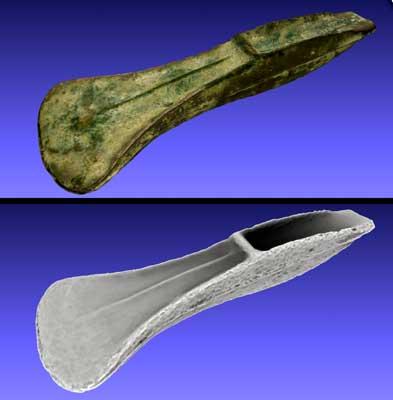
A 3D model of a Bronze Age palstave, shown both with a photographic texture and with an ‘ambient occlusion’ surface (for an online version visible in most browsers on a desktop/laptop, see micropasts.org/3D/).
To complement this masking work, we have developed a ‘Learning’ page on micropasts.org with a number of resources including step-by-step working notes explaining how 3D models can be created offline with different kinds of software. This page provides context and purpose to the photo-masking application offered on the MicroPasts website, and allows interested members of the public to gain new digital skills if they wish. Furthermore, we welcome and encourage advice from the MicroPasts community on ways of enriching the ‘Learning’ page or other parts of the platform, and comments on whether and how volunteers use the source or derived data produced via crowd-sourcing.9 This feedback also provides useful insights into the lifecycle of open archaeological and historical data and their public value. In future, we hope to support the creation of contributor-generated 3D models from the ground up, by providing an upload facility through which volunteers can submit their own sets of images for artefact modelling. Together with this and other applications that the team are developing, we also look to foster crowd-sourcing activities conducted jointly by volunteer communities and academic institutions, and micro-financed through the MicroPasts crowd-funding site.
A final and important component with which the lead author is heavily involved is an evaluation of public participation via the MicroPasts project. In undertaking this research, we will examine the processes of online community development; contributors’ motivations and how these relate to their different cultural interests, socio-demographic characteristics, lifestyles and ways of contributing to the MicroPasts platforms; and the value of the model for volunteers, staff and partnering institutions. To investigate these aspects, we draw on both quantitative and qualitative approaches, combining more traditional methods (e.g. online surveys) with ‘natively digital’ ones (Rogers 2013) consisting of the analysis of data relating to user behaviour, interests and attitudes extracted from the MicroPasts platforms and social media. This evaluative strategy entails dealing with very large quantities of information and, as such, it also aims to offer a valid contribution towards advancing web-based methodologies for research in public archaeology and cultural heritage studies that use big data.10
Web-based evaluative tools have been developed together with the engagement platforms so as to ensure that they do not disrupt people’s participation. So far, we have enabled a short survey that appears to users as a pop-out window after they have completed their first crowd-sourcing task. This form has been designed to collect selected information on the social networks via which contributors have heard of MicroPasts; these insights are then combined with Google Analytics data and membership data for a longitudinal assessment of the dynamics of community formation. A second follow-up survey pops up after the submission of the 25th task and allows an exploration of the motivations for, and value of, participation for different contributors, in association with their use of the MicroPasts sites. The threshold of 25 tasks was decided after assessing possible cut-off points in plots of contributor participation up to 23rd June 2014, across the four crowdsourcing applications (Fig. 6). The chart below shows a ranking of the 454 authenticated members of the crowd-sourcing website based on the number of tasks they completed, with the cut-off point at task 25 highlighted. Each ‘task’ on the y-axis might be the transcription of a single index card or the masking of a single photograph. The rank on the x-axis is the position of a particular online contributor on the MicroPasts leaderboard (identified by their user login), with the first-ranked contributor having completed the most tasks on the site. Such ‘rank-size’ plots (with logarithmic-axes) are similar to the ones used in landscape archaeology to understand settlement size hierarchies. In our case, this plot exhibits a ‘long-tailed’ distribution in which a handful of particularly active contributors are currently doing most of the work on the site, whilst many visitors are only trying out one or two tasks each (this being a typical experience amongst crowd-sourcing projects). The labels A9, B8 and B16 correspond to physical drawers of index cards in the hard copy archive that were put online as separate applications. A detailed discussion of the methodology and results of the evaluation of the initial phases of the MicroPasts project will be published in due course as the outputs of the research develop further.
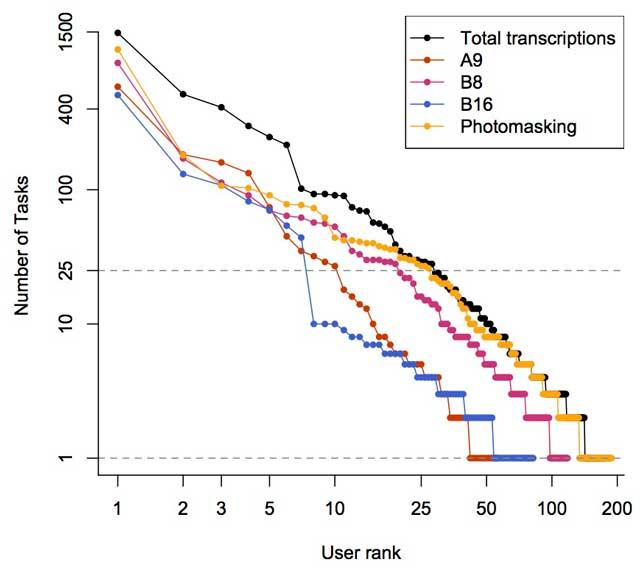
The distribution of tasks per user across the three transcription applications and one photo-masking application on the MicroPasts site (available at crowdsourced.micropasts.org).


